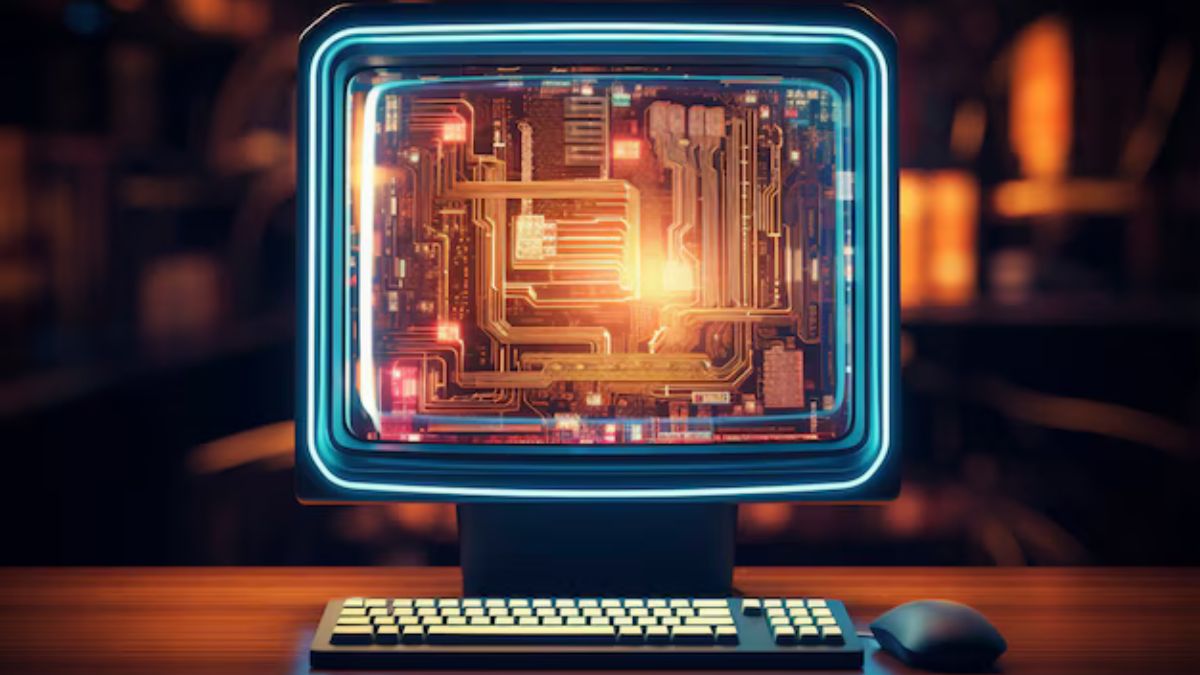TECHNOLOGY
Decoding BGFVCDX: Common Misconceptions and Facts

In the ever-evolving world of technology and digital communication, acronyms often leave us scratching our heads. One such term that has sparked curiosity is BGFVCDX. What does it mean? Why does it matter? Whether you’ve stumbled upon this acronym in a forum or heard it mentioned in a tech discussion, you’re not alone in your quest for clarity.
Join us as we peel back the layers on BGFVCDX and unravel its mystery. From its historical roots to common misconceptions, we’ll explore what truly lies beneath this intriguing abbreviation. Let’s dive into the facts and help you understand how to effectively leverage BGFVCDX in real-life scenarios!
What is BGFVCDX?
BGFVCDX stands for “Broadband Global Fiber Virtual Circuit Data Exchange.” It’s a term often used in telecommunications and data networking.
At its core, BGFVCDX facilitates the seamless transfer of data across various networks. This concept is crucial for businesses that rely on fast and reliable internet connections to operate efficiently.
The acronym represents a framework designed to improve the performance of virtual circuits. It helps manage bandwidth allocation effectively while reducing latency issues during communication.
Understanding BGFVCDX is essential for network engineers and IT professionals. The growing demand for high-speed internet makes this technology increasingly relevant in today’s digital landscape. By enabling efficient data exchange, it also supports various applications ranging from video conferencing to cloud services, making it indispensable for modern enterprises.
The History of BGFVCDX
The journey of BGFVCDX began in the early 2000s. It emerged as a response to growing demands for more efficient data management solutions.
Initially, it was designed for specific industries facing unique challenges. As technology evolved, so did BGFVCDX’s capabilities. Developers recognized its potential beyond niche markets.
By the mid-2010s, its adoption surged across various sectors. Organizations sought innovative ways to leverage data for decision-making and operational efficiency.
This period marked significant advancements in algorithms and user interfaces. The community around BGFVCDX grew, fostering collaboration among users and developers alike.
Today, it stands as a versatile tool embraced by businesses worldwide. Its history reflects not just technological evolution but also changing market needs driving innovation forward.
Misconceptions and Myths about BGFVCDX
Many people have a skewed understanding of BGFVCDX. One common misconception is that it’s only for advanced users. This isn’t true; beginners can benefit from its features just as much.
Another myth suggests that BGFVCDX is overly complicated. While it may seem daunting at first glance, the interface is designed to be user-friendly and intuitive.
Some believe that utilizing BGFVCDX requires extensive training or technical skills. In reality, many users find they can quickly adapt without any prior experience.
There are also claims about limited applicability across industries. However, BGFVCDX has proven versatile in various fields, catering to different needs effectively.
Some think it’s a passing trend with no staying power. The growing community around it indicates otherwise—BGFVCDX is here to stay and evolve over time.
The Facts about BGFVCDX
BGFVCDX is a powerful tool designed for data analysis and visualization. It stands out due to its versatility in handling large datasets efficiently.
One of the key facts about BGFVCDX is its ability to integrate seamlessly with various platforms. This flexibility allows users from different industries to benefit immensely from it.
Additionally, BGFVCDX supports multiple programming languages. This means that whether you’re a Python enthusiast or prefer R, you’ll find it user-friendly.
Moreover, the community surrounding BGFVCDX is robust. Users can share insights, troubleshoot issues, and discover innovative ways to utilize the platform.
Security features are also top-notch. With increasing concerns over data privacy, BGFVCDX ensures your information remains protected at all times.
These elements combine to make BGFVCDX an essential asset for anyone looking to enhance their analytical capabilities without sacrificing usability or safety.
How to Properly Use BGFVCDX
To harness the potential of BGFVCDX, start with a clear understanding of its purpose. Identify what you’re aiming to achieve with this tool.
Next, ensure you have the right data inputs. Accurate and relevant information is crucial for optimal results. The more precise your input, the better your output will be.
When utilizing BGFVCDX, follow established protocols or guidelines specific to your industry. This ensures consistency and reliability in outcomes.
Regularly review your processes as well; adjustments may be necessary based on changing circumstances or new insights.
Engage with a community of users if possible. Sharing experiences can illuminate best practices that you might not have considered before.
Real Life Examples of BGFVCDX in Action
BGFVCDX has made its mark in various sectors, showcasing its versatility. In the healthcare industry, a hospital implemented BGFVCDX to streamline patient data processing. This not only reduced errors but also significantly improved patient care.
In the tech world, a software company used BGFVCDX to enhance their system’s efficiency. By incorporating this strategy, they could process complex algorithms faster than ever before.
The retail sector is another area where BGFVCDX shines. A major retailer adopted it for inventory management and saw a remarkable decrease in stock discrepancies.
Education institutions have also embraced BGFVCDX to improve student engagement through personalized learning experiences.
These examples highlight how diverse industries leverage BGFVCDX to drive innovation and effectiveness across operations.
Conclusion
Understanding BGFVCDX can illuminate many facets of its application and relevance. As we have explored, this term is often shrouded in misconceptions that cloud its true significance. By distinguishing facts from myths, we gain clarity on how to effectively utilize BGFVCDX in various contexts.
Real-life applications demonstrate the versatility of BGFVCDX across different industries, showcasing its potential to enhance operations or strategies significantly. Proper usage is key; being informed equips individuals and organizations alike to make the most out of what BGFVCDX has to offer.
As you delve deeper into this topic, keep an open mind about the possibilities and practical benefits associated with BGFVCDX. Embracing accurate knowledge will empower you to navigate through any confusion surrounding it while maximizing your understanding and implementation of this concept.
TECHNOLOGY
The Impact of Alaya AI on Business Efficiency and Productivity

Introduction to Alaya AI
In today’s fast-paced business landscape, staying ahead of the competition is crucial. Enter Alaya AI, a transformative technology that’s changing the way companies operate. Imagine having an intelligent system that streamlines processes, increases productivity, and enhances decision-making—all at once.
This innovative artificial intelligence solution is designed to understand your unique business needs and adapt accordingly. As organizations harness the power of Alaya AI, they find new opportunities for growth and efficiency like never before.
Join us as we explore how Alaya AI is revolutionizing business operations across various industries. From real-world case studies to insights on its advantages and potential challenges, discover why this cutting-edge tool might just be the key to unlocking your company’s full potential in today’s digital age.
How Alaya AI is revolutionizing business operations
Alaya AI is transforming the way businesses operate by streamlining processes and enhancing decision-making. By leveraging advanced algorithms, it analyzes vast amounts of data in real-time. This allows companies to make informed choices quickly.
Automation plays a crucial role here. Routine tasks that once consumed hours can now be completed in minutes. Employees are freed from mundane duties, allowing them to focus on strategic initiatives.
Moreover, Alaya AI offers predictive analytics that identifies trends before they become apparent. Businesses can anticipate market shifts and adapt accordingly.
Collaboration becomes more efficient as well. Teams access shared insights easily, fostering innovation and creativity among members.
With its user-friendly interface, businesses of all sizes can integrate Alaya AI seamlessly into their operations without extensive training or resources needed for implementation. The result? Enhanced agility and responsiveness in an ever-changing market landscape.
Case studies of businesses that have implemented Alaya AI
Several businesses have harnessed the power of Alaya AI, reaping significant benefits in efficiency and productivity. For instance, a leading e-commerce company integrated Alaya AI into its customer service operations. This resulted in faster response times and improved customer satisfaction.
Another case worth noting involves a manufacturing firm that adopted Alaya AI for inventory management. By utilizing predictive analytics, they optimized stock levels and reduced waste significantly.
In the financial sector, a regional bank utilized Alaya AI to enhance fraud detection mechanisms. The system effectively flagged suspicious transactions with remarkable accuracy, minimizing losses while maintaining trust among clients.
These examples showcase how diverse industries are leveraging Alaya AI to streamline processes and drive growth. Each success story highlights specific applications tailored to unique operational challenges—demonstrating adaptability across various business models.
Advantages of using Alaya AI for business efficiency and productivity
Alaya AI brings a multitude of advantages that can significantly enhance business efficiency and productivity.
One major benefit is its ability to streamline processes. By automating routine tasks, Alaya AI frees up valuable time for employees to focus on higher-level work. This shift not only increases output but also fosters creativity.
Moreover, the data analysis capabilities of Alaya AI are impressive. It helps businesses make informed decisions by providing insights based on real-time data trends. Companies can quickly adapt strategies, boosting responsiveness in fast-paced markets.
Collaboration improves as well with Alaya AI’s tools designed for seamless communication among teams. Enhanced teamwork leads to more innovative solutions and better project outcomes.
Cost reduction is another significant advantage. Automating various functions minimizes operational expenses while maximizing profitability over time, creating a win-win scenario for organizations aiming for growth without increasing their budget.
Potential challenges and solutions for implementing Alaya AI
Implementing Alaya AI can present several challenges for businesses. One significant hurdle is the integration with existing systems and workflows. Companies may struggle to adapt their processes, leading to disruption.
Data privacy concerns also arise as organizations leverage AI technology. Ensuring compliance with regulations while protecting sensitive information is crucial.
Another challenge lies in employee resistance to change. Staff may fear that automation will replace jobs or complicate their roles. Addressing these fears through training and open communication can help ease transitions.
To combat these issues, companies should develop a clear implementation strategy. Investing in proper training programs fosters confidence among employees.
Additionally, creating a feedback loop allows ongoing adjustments based on user experiences. This adaptability enhances overall satisfaction with the Alaya AI system and promotes effective utilization across teams.
Future predictions for the use of Alaya AI in businesses
The future of Alaya AI in businesses looks incredibly promising. As technology continues to evolve, we can expect even more sophisticated applications designed to enhance decision-making processes.
Businesses will likely adopt Alaya AI for real-time data analysis, enabling them to make informed choices almost instantaneously. This could streamline workflows and improve customer interactions significantly.
Moreover, advancements in natural language processing may allow Alaya AI to better understand human emotions and sentiments. This capability could transform how companies approach customer service and marketing strategies.
In the realm of automation, expect increased efficiency across various sectors. Routine tasks might be handled seamlessly by Alaya AI, freeing up employees to focus on creative problem-solving.
As more businesses embrace this technology, collaboration between humans and AI is expected to flourish. The synergy created may lead organizations toward unprecedented levels of productivity.
Conclusion: Embracing the power of Alaya AI for success in the modern business world
As businesses continue to navigate an increasingly competitive landscape, the integration of Alaya AI stands out as a transformative opportunity. By harnessing its capabilities, organizations can streamline operations and significantly boost productivity.
Embracing Alaya AI is not just about leveraging technology; it’s about fostering innovation and enhancing decision-making processes. The data-driven insights provided by this powerful tool empower teams to focus on strategic initiatives rather than mundane tasks.
Moreover, as companies adapt to the challenges that come with implementing such advanced solutions, proactive strategies can be developed to mitigate potential hurdles. Continuous learning and adaptation will ensure that businesses remain at the forefront of their industries.
The future holds immense possibilities for those willing to embrace Alaya AI. With ongoing advancements in artificial intelligence, we are likely to see even greater efficiencies realized across various sectors.
For businesses aiming for growth and success in today’s fast-paced world, integrating Alaya AI is no longer optional; it’s essential for thriving amidst change. Embracing this technology could very well define tomorrow’s leaders in business efficiency and productivity.
-

 TECHNOLOGY1 year ago
TECHNOLOGY1 year agoTop 5 Tips for Mastering in_a_dndmixin_drag in Your Campaigns
-

 TOPIC1 year ago
TOPIC1 year agoExploring the History and Culture of Rosewellsk
-

 TECHNOLOGY1 year ago
TECHNOLOGY1 year agoYMoviesHD vs Other Streaming Platforms: A Comprehensive Comparison
-

 TOPIC1 year ago
TOPIC1 year agoBehind the Scenes: The Philosophy and Vision of PhmHaven
-

 TOPIC1 year ago
TOPIC1 year agoThe Rise of Tribute Printed Pics: Honoring Life Through Photography
-

 TOPIC1 year ago
TOPIC1 year agoA Beginner’s Journey with Lwedninja: From Novice to Pro
-

 TOPIC1 year ago
TOPIC1 year agoIs Finizona Free? Unpacking the Costs Behind This Popular Platform
-

 TOPIC1 year ago
TOPIC1 year agoDecoding m0therearf: Why This Buzzword Matters in Today’s Culture
